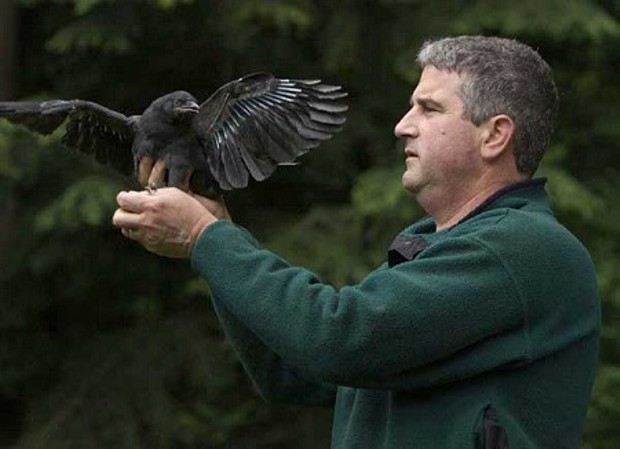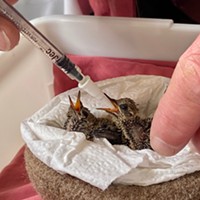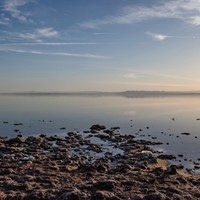Wednesday, November 21, 2012
Scare Crow
Posted By Heidi Walters on Wed, Nov 21, 2012 at 12:36 PM
Freaked-out opposition and stern eyebrow-raising amongst the citizenry has caused the U.S. Fish and Wildlife Service to drop its plan to poison crows and ravens on Clam Beach as a means to protect the threatened Western snowy plover.
The plan -- called an experiment by the Fish and Wildlife Service -- was to plant avicide-laced chicken eggs on the beach where plover-egg plundering corvids are wont to roam. The Fish and Wildlife Service's news release announcing its dropping of the plan states quite pointedly why it was considering such a severe measure:
"Humboldt County's Clam Beach has one of the most aggressive predation rates by crows and ravens on snowy plovers within the bird's range. In the last 11 years, more than 70 percent of Pacific Coast snowy plover eggs along the northern-most California coast have been lost due to crow and raven predation."
You can see the motivation.
At public gatherings to discuss the plan, the service said it had tried less extreme methods of corvid control, with limited success, including putting in better garbage receptacles at the beach, enclosing snowy plover nests in a way that only the plovers can get in and out of their nest areas, hazing ravens and crows with slingshots, and -- in a brief experiment by a graduate student -- staging a crow-killing in front of other crows then hanging the "slaughtered" (stuffed roadkill) bird from a pole. That scared some birds, but only in a small range.
Now the service will go back to the arsenal to try to come with a new, non-lethal plan -- with the public's help -- for protecting plovers. Those who want to help develop a new plan -- and we're figuring that's every one of you who squawked about the poison one -- might want to go to the meetings the service has set up: 6 to 7:30 p.m. on Nov.29 at the Humboldt County Agriculture Center, 5630 South Broadway in Eureka; and during the Dec. 12 McKinleyville Community Services District Board meeting, which starts at 7 p.m., at Azalea Hall, 1620 Pickett Road in McKinleyville.
In the meantime, we've heard a few ideas from wildlife professor John M. Marzluff at the School of Environmental and Forest Sciences, University of Washington, Seattle. We featured Marzluff in our story about smart corvids -- Steller's jays, in particular, and ravens and crows -- called Bright Bird, back in June.
He was incensed to hear about the poison plan. He said the service did not try hard enough to make a non-lethal approach work. And killing ravens and crows, he added, is not sustainable:
"Some corvids will die. Other corvids will move in and take their place, likely right away. Plovers will still be eaten by corvids. Plovers will be eaten by other predators also."
He suggested a number of alternatives: taste-aversion conditioning of ravens and crows by planting fake plover eggs injected with vomit-inducing substances to turn the birds off -- like Humboldt State researchers have been doing to stop jays from eating marbled murrelet eggs; human scarecrows -- rangers who patrol the beach during plover season; more scary crow-death re-enactments to frighten the predators out of wanting to be on the beach; and even better garbage pick-up from the beach. Said Marzluff:
"They probably haven't tried dogs running the beach who are trained to chase corvids, either. Again, they need to be creative, not just reactive."
Marzluff scoffed at the service's calling the poison plan an "experiment."
"No, that is not an experiment. Where are the controls? Where is the replication? What is the design? It sounds to me like it is an attempt to see if poisoning would have an effect, but the only real way to do that is to have replicates in various areas and compare the plover success in areas with and without poison eggs."
So, let the creativity begin.
Speaking of...
Comments (11)
Showing 1-11 of 11
Readers also liked…
more from the author
-
From the Journal Archives: When the Waters Rose in 1964
- Dec 26, 2019
-
Bigfoot Gets Real
- Feb 20, 2015
-
Lincoln's Hearse
- Feb 19, 2015
- More »



































